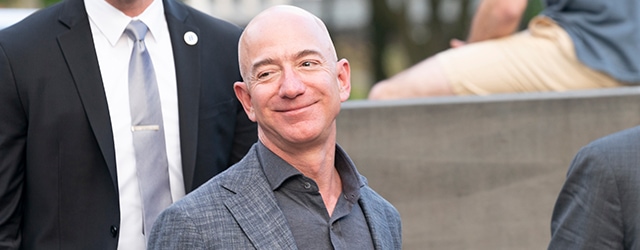Billionaire wealth grewdespite theglobal pandemic, particularly for those in tech, health care, and industrials.

Billionaires have never been so many, nor so rich, but most of all they have never been so heterogeneous a group, as their wealth depends crucially on the sector in which they made it. A report released last month by the UBS Group and PriceWaterhouse Coopers found that fortunes accumulated in technology, health care and industrials surpassed those generated in media and entertainment. And while the tumultuous months of 2020 have, on average, made billionaires richer owing to the sharp recovery in global equity markets, they have also accentuated the differences between technology innovators and disruptors and the rest of the high-net-worth crowd.
That represents a stark contrast to the past decade, when the ranks of billionaires grew steadily across industries, and a watershed in tye march to dominance of the architects of “creative disruption.”
“This COVID-19 crisis could be the real border between the old and new economy,” says an anonymous Italian billionaire mentioned in the UBS/PwC report. “This may give the opportunity to create a better economic environment, focusing on sustainable growth and efficiency with less bureaucracy and procedures.”
Scientists, computer programmers and software engineers are becoming “serial entrepreneurs,” the report said, “as they exploit novel technologies to develop new products, services and business models.” Innovators are “using a growing warehouse of new technologies for a business revolution that’s beginning to ripple out across sectors, creating new businesses and new wealth, with benefits for themselves and broader society.”
This class of “innovators and disruptors” have increased their wealth by 17% to $5.3 trillion since 2018 while other billionaires’ wealth increased by only 6% to $3.7 trillion.” Technologies that helped fuel this high-end wealth gap included artificial intelligence, augmented reality, blockchain, cloud computing, 3D printing and their applications to different products and industries.
The seventh edition UBS and PwC’s annual “Billionaire Insights” study drew from about 60 interviews in 43 markets in the Americas, Europe, the Middle East, Africa and the Asia-Pacific. Wealth in the hands of billionaires is the highest ever recordeded, it found, even if over a period of weeks in February and March it dropped 6.6% or $564 billion, to $8 trillion. At the end of July, it had recovered to $10.2 trillion, surpassing its previous peak of $8.9 trillion at the end of 2017. The world is now home to 2,189 billionaires, up from 2,158 in 2017.
“A Hinge Point In History”
The wealth gap between disruptors and other billionaires looms larger when broken out by industry.
“During 2018, 2019 and the first seven months of 2020,” the report found, “technology billionaires’ total wealth rose by 42.5% to $1.8 trillion, supported by the surge in tech shares. Meanwhile, health care billionaires’ total wealth increased by 50.3% to $658.6 billion, boosted by a new age of drug discovery and innovations in diagnostics and medical technology, as well as latterly COVID-19 treatments and equipment.”
Software giants such as Microsoft and Oracle have become “billionaire factories” and may remain so, as they are “quickly moving into areas such as AI, cloud computing and software as a service.” Mainland China’s health industry leaders posted some of the biggest gains in wealth on “a surge in the country’s drug and medical devices industries.”
The US remain the country with largest wealth, the report found, but Asia-Pacific is the most dynamic region with 831 billionaires, more than any other: “Geographically, Mainland China benefited most, as billionaire wealth grew fastest of all in Asia. By early April 2020, there were 389 Chinese billionaires, worth a total of US$1.2 trillion.” In the last decade, “their wealth had grown by almost nine times, compared with twice in the U.S.”
A small but promising number of billionaires are also philanthropy leaders, seeking to balance environmental and social values with corporate profitability, the report noted. “Billionaires are giving more than at any time in history,” it found. “The upsurge is reminiscent of the first few decades of the 20th century, at the time of the Second Industrial Revolution, when the relationship between American capitalism and philanthropy flourished and fortunes were invested in supporting opportunity creation through schools, universities, libraries and research centers.”
Billionaires who are part of this new wave of philanthropy share many of the same priorities in their giving. “The top ten billionaire-controlled companies ranked by sustainability performance are almost all associated with billionaires who are also COVID-19 donors and venture capital investors in clean tech businesses,” the report found. “Nine of the 10 are COVID-19 donors and seven also invest in clean tech.”
As examples, the report cites Wipro Chairman Azim Premji, whose Azim Premji Foundation is dedicated to education in India; David Duffield, a leading U.S. software entrepreneur and the head of a foundation dedicated to animal welfare; and Anne Beaufour, granddaughter of the founder of Ipsen, one of France’s largest pharmaceutical companies and a COVID-19 donor. Two of the three also invest in clean tech.
If 2020 has seen billionaires’ wealth burgeon, it also underscores the vast economic and social responsibility they shoulder. This year marks “a hinge point in history,” UBS and PwC found, “when the COVID-19 storm turbocharged the economy’s transition to digital, while becoming less global and more indebted. In the next 10 years, society’s business innovators have a vital role to play in applying the world’s growing inventory of emerging technologies to boost productivity.”



